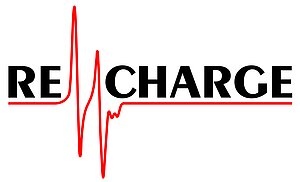Sascha Gehrke, student of our <link https: imprs.cec.mpg.de external-link-new-window internal link in current>IMPRS RECHARGE in the group of <link https: www.chemie.uni-bonn.de pctc mulliken-center bilder barbara-kirchner external-link-new-window internal link in current>Prof. Barbara Kirchner, has succeeded in placing a publication in the <link http: www.rsc.org journals-books-databases about-journals faraday-discussions external-link-new-window internal link in current>Faraday Discussions journal together with colleagues.
Faraday Discussions is a scientific journal published by the Royal Society of Chemistry, which publishes original research papers presented during a Faraday Discussions Meeting.
<link http: pubs.rsc.org en content articlelanding fd external-link-new-window internal link in current>The publication, in which Mr. Gehrke is lead author, is about a method by which the (diffusion-corrected) exchange rate of weak interaction partners in liquids can be determined from computer simulations. The method includes corrections to take account of the effects of the random mixing of the liquid.
The special thing about a publication in Faraday Discussions is that you do not simply submit articles there as usual, but authors are invited to publish something, which can then be extensively discussed at a Faraday Discussions meeting.
The topic of the corresponding Discussions Meeting was "<link http: pubs.rsc.org en journals external-link-new-window internal link in current>Ionic liquids: from fundamental properties to practical applications". Sascha Gehrke and his colleagues were invited to participate in the discussion and thus to the issue with a publication.
Short summary:
Liquid properties are the result of a subtle interplay between various attractive and repulsive interactions that make their prediction notoriously difficult. These interactions may be strong, as those between two charged species, or weak, as those leading to the formation of hydrogen bonds. Questions, such as how long does a hydrogen bond live, or how long do two ions aggregate are thus at the heart of theoretical chemistry research on liquid systems. The answer, however, is hardly ever trivial, especially in complex liquids, where a myriad of other processes couples to the elementary dynamic processes of interest. While statements such as “a hydrogen bond may only form, after two particles have approached each other” sound trivial on paper, advanced and state-of-the-art methods are required to uncouple the random motions of particles from the bond formation process. In the article, we apply such a method to study the hydrogen bond and ion pair dynamics of ionic liquids. The chosen approach is not only a robust way to isolate the target processes, but additionally reveals valuable information about other dynamical processes, which are only slightly understood to date.
Gehrke, S., von Domaros, M., Clark. R., Hollóczki, O., Brehm, M., Welton, T., Luzar, A. and Kirchner, B.. (2017) Structure and lifetimes in ionic liquids and their mixtures, Faraday Discussions, <link http: pubs.rsc.org en content articlelanding fd external-link-new-window internal link in current>doi: 10.1039/C7FD00166E

